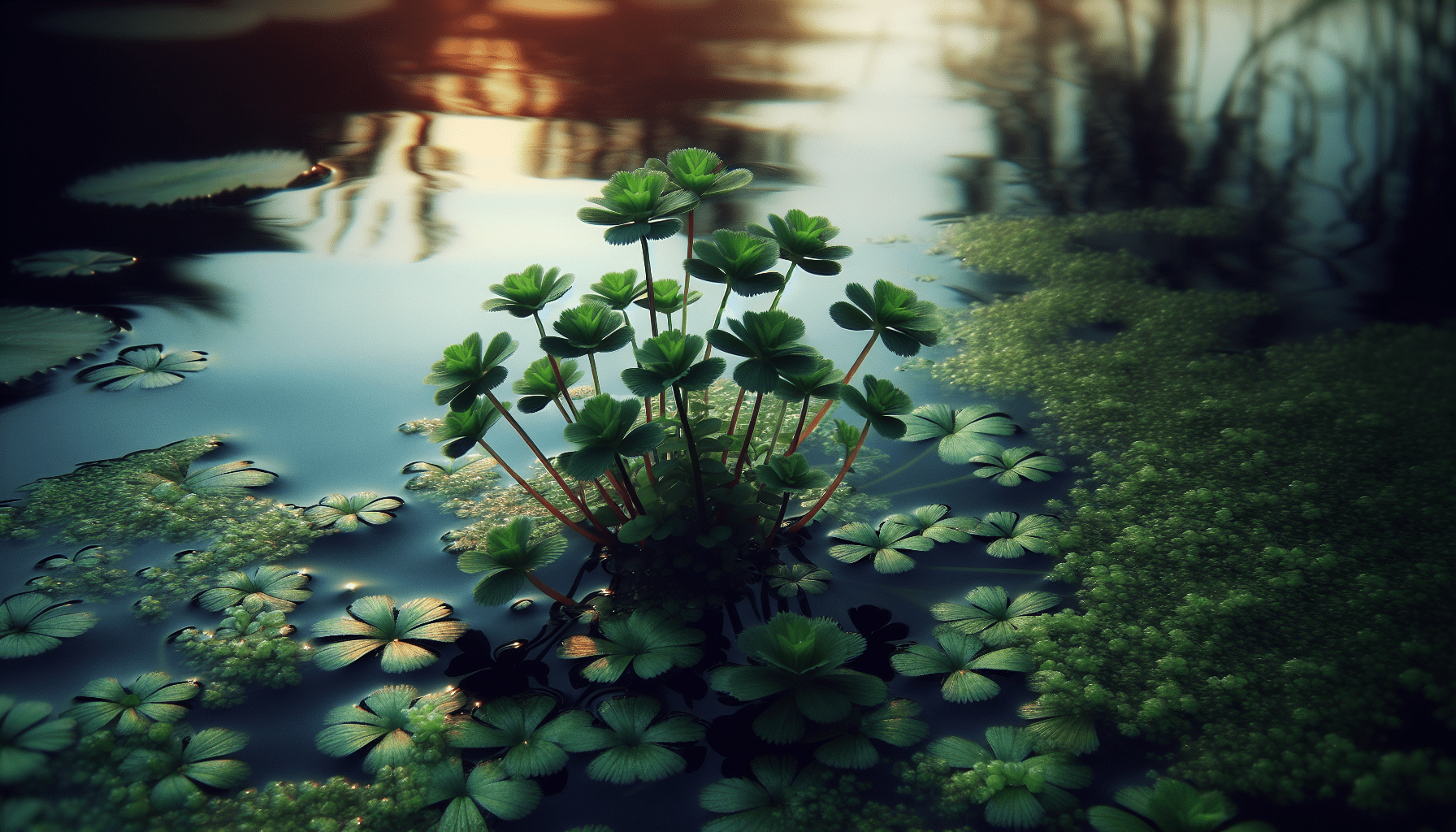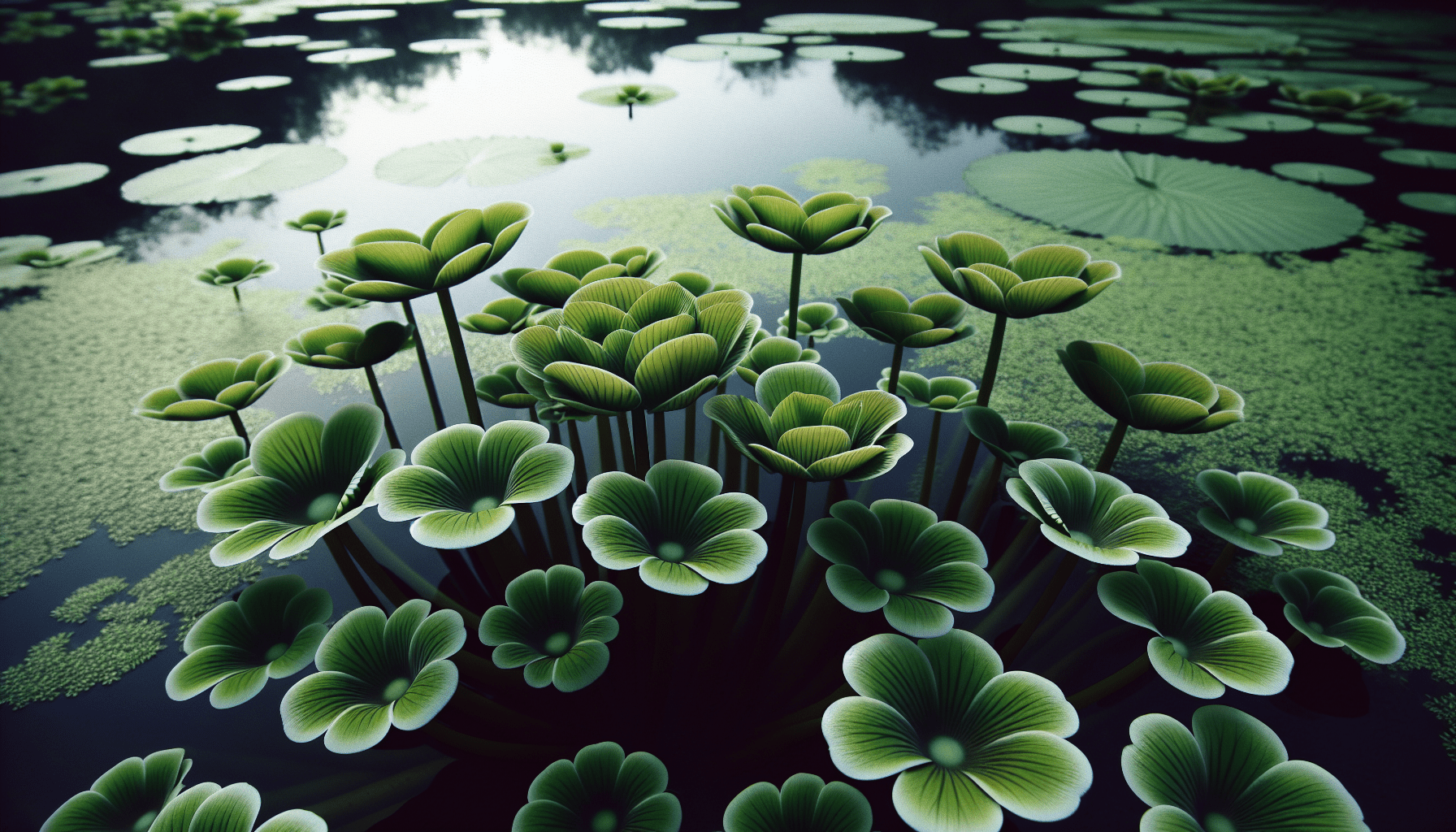As you navigate the world of aquatic botany, “What Is The Aquatic Weed Lemna Aequinoctialis” stands as a comprehensive guide designed to demystify this particular water plant. Prevalently known as a formidable challenge in the realm of aquatic management, this unique species holds a significant ecological role, yet exhibits an unparalleled propensity for uncontrolled proliferation. In this article, your understanding of this water weed will be enriched through an exploration of its characteristics, its impact on aquatic ecosystems, and the measures employed to control its rapid expansion.

Overview of Lemna Aequinoctialis
Definition and basic description of Lemna Aequinoctialis
Lemna aequinoctialis, commonly known as Lesser Duckweed, is a species of aquatic plant from the family Lemnaceae. This plant is recognized for its small, free-floating structure, which measures approximately 1.5mm to 2.5mm in length. As the name suggests, it resembles a diminutive version of common duckweed. It is a monocot with a photosynthetic body termed a frond, typically bearing two small roots underneath.
The native range of Lemna Aequinoctialis
Being a cosmopolitan species, Lemna aequinoctialis is native to many regions around the world. The plant is predominantly found thriving in tropical and subtropical regions, although it can dominate temperate zones, particularly in regions with mild winters. It is frequently discovered in open, standing, or slowly moving water bodies such as small seasonal ponds, vernal pools, wetlands, and ditches.
Environmental conditions favoring the growth of Lemna Aequinoctialis
Lemna aequinoctialis is known for its ability to multiply rapidly, forming dense colonies that can blanket the surface of water bodies. This feature is partially enabled by its low environmental requirements and adaptability. The plant prefers full sunlight and nutrient-rich water bodies. It shows particular resilience in waters with elevated levels of pollutants or nitrates, possibly an evolutionary mechanism that allows the plant to survive and propagate in disturbed or polluted conditions.
Identification and Physical Description of Lemna Aequinoctialis
Size, shape, and color of the Lemna Aequinoctialis
The fronds of Lemna aequinoctialis are small, generally between 1.5mm and 2.5mm in size. They are broad and flat, possessing an ovate to elliptical shape, with a green, semi-translucent appearance. Solo fronds are less frequent than groups, with two to three fronds typically joined at their tips.
Distinguishing characteristics that set it apart from similar species
Anyone attempting to identify Lemna aequinoctialis might mistake it for other types of duckweeds. Unlike most other species that have numerous roots per frond, Lemna aequinoctialis sports one or two roots per frond. Furthermore, it does not form a substantive root cap at the root tip, a feature that distinguishes it from other Lemna species.
Growth and Reproduction of Lemna Aequinoctialis
Description of its life cycle
Lemna aequinoctialis, a perennial, typically undergoes the bulk of its life cycle within one growing season. The plant divides by budding, emerging as new fronds on the mother plant, where they remain attached until mature. Regions with mild winters may see the duckweed overwinter as green fronds, but in harsher climates, specialized overwintering fronds called turions ensure survival.
How it reproduces and spreads
Reproduction in Lemna aequinoctialis, like in many aquatic plants, is primarily vegetative, with new plantlets forming from the fronds of an existing plant. This mode of reproduction makes the spread of the duckweed extremely rapid, and it can quickly dominate still or slow-moving water bodies. Furthermore, the tiny size of the plant and its affinity to float enables dispersal by wind, water currents, and wildlife, enabling spread across wide geographical areas.
Factors influencing its growth and reproduction
The growth of Lemna aequinoctialis is heavily influenced by various environmental factors including temperature, light availability, water chemistry, and nutrient availability. The plant prefers warm waters for optimal growth and has a higher tolerance for polluted environments. High nutrient levels, especially nitrates and phosphates, can trigger explosive growth.

Role in the Ecosystem
Its place in the food chain
Lemna aequinoctialis, moving up the food chain, can be consumed by a variety of wildlife, especially waterfowl that eat the weed directly or accidentally ingest it while feeding on other vegetation in waterbodies. Furthermore, invertebrates, such as snails and insects, often feed on this plant and can aid in control by reducing its population, thereby forming part of a complex food chain in aquatic ecosystems.
Interactions with other organisms
The phenomenal growth of Lemna aequinoctialis can influence the interaction of a multitude of organisms within an ecosystem. By forming dense mats on the surface, it may outcompete other aquatic plants, affecting the flora and fauna that rely on them. Furthermore, these mats decrease oxygenation in water bodies, impacting fish and other aquatic organisms.
Benefits to wildlife and other plants
Despite its invasive nature, Lemna aequinoctialis can provide certain benefits to ecosystems. For example, its extensive mats offer shelter for various aquatic organisms and a breeding ground for certain kinds of insects. Moreover, it can reduce water evaporation, thereby preserving water bodies during dry periods.
Impact on Human Activities
Negative effects on water quality and use
Heavy infestations of Lemna aequinoctialis can lead to a significant decrease in water quality by depleting oxygen levels and altering the pH. Rising anaerobic conditions may result in the death of fish and other aquatic organisms. As such, the presence of this aquatic plant can render a water body unsuitable for various human uses such as irrigation, fishing, or recreational usage.
Impacts on fishing, boating, and other recreational activities
The formation of thick mats of Lemna aequinoctialis on the surface of water bodies can hinder various recreational activities. The weed can clog fishing nets, impede rowing of boats, restrict swimming, and disrupt the overall aesthetic value of water bodies, potentially leading to losses in recreational and tourist revenues.
Costs and challenges of controlling its spread
Controlling the spread of Lemna aequinoctialis can be a difficult and expensive task. Its high reproductive rate and widespread dispersal means that infestations are costly and labor-intensive to mitigate. Additionally, as a result of its potential environmental impact, its control must strike a balance between effectiveness and environmental sustainability.
Environmental Implications
Effects on biodiversity
The aggressive proliferation of Lemna aequinoctialis can significantly impact local biodiversity by outcompeting native flora for space, sunlight, and nutrients. Furthermore, by affecting water quality and oxygen levels, it may have direct and indirect effects on aquatic fauna diversity.
Consequences for local and regional ecosystems
Such dramatic ecological alterations might alter local and regional ecosystems, affecting the organisms that inhabit these ecosystems but also potentially influencing larger-scale climate variables. For example, dense mats of the aquatic weed may change evaporation and heat absorption rates of water bodies, thereby influencing local climate patterns.
Management and Control Strategies
Physical methods of control
Physical control methods for Lemna aequinoctialis include manual removal and water body manipulation. Manual removal can be labor-intensive and may be unsustainable for large infestations. Alternatively, manipulating water levels can also be a successful strategy by exposing the plants and causing them to dry out and perish.
Chemical treatment options
Chemical control involves the use of algaecides and herbicides to kill the weed, but these methods must be employed carefully to prevent harm to non-target organisms and the wider environment. Periodic monitoring post-treatment is also necessary to ensure regrowth does not occur.
Biological control methods
Biological control methods involve using organisms that naturally feed on or parasitize the weed. Duckweeds can be consumed by certain birds, insects, and fish, providing a natural controlling factor within the ecosystem. The challenge lies in introducing and maintaining these biological controls without causing further disruption to the ecosystem.
Research and Innovations in Lemna Aequinoctialis Management
Current research approaches
Modern research is focusing on innovative ecological and technological approaches to control Lemna aequinoctialis infestations and explore its potential benefits. These include the development of bioenergy and biofertilizers or using the plants for wastewater treatment and nutrient removal from eutrophic waters.
Technological advancements in control methods
Technological advancements such as genetic engineering and nanotechnology could be used in developing more effective control solutions. For instance, developing strains of the weed that grow slower and compete less effectively could be a potential strategy.
Sustainability and environmental considerations in research
In developing and evaluating new strategies for control, sustainability and minimal environmental impact should be emphasized. It is crucial that the methods used do not cause further harm to already fragile ecosystems.
Lemna Aequinoctialis in the Future
Predictions about its future spread
Given the adaptability and reproductive capacity of Lemna aequinoctialis, forecasts suggest that infestations will likely continue to spread, particularly in warmer climate regions. Desirably, intensive global management and research could hopefully reduce this spread.
Efforts to prevent its expansion
Efforts to prevent the expansion of Lemna aequinoctialis include early detection, swift intervention, environmental education, and engaging communities in conservation activities. Moreover, strict control of water pollution, which often facilitates the growth of duckweeds, could also help in limiting their spread.
Potential impacts of climate change on Lemna Aequinoctialis
Climate change, particularly increasing temperatures and alterations to water cycles, might affect the distribution of Lemna aequinoctialis. While climate change may exacerbate infestations in some areas, it may render others unsuitable for habitation, pointing to a potentially complex relationship between climate change and the spread of this species.
Conclusion
Summary of main points
Lemna aequinoctialis, a small aquatic weed, is a complex organism with both significant ecological impacts and potential benefits. Its impressive adaptability and potent reproduction make it a severe challenge to control, and as such, it requires multifaceted management effort.
Implications for further study and management strategies
The dynamics of Lemna aequinoctialis and its interactions with the environment are still not fully understood. Future research should seek to close these knowledge gaps and provide insights for more effective and sustainable management strategies.
Call to action for improved understanding and control of Lemna Aequinoctialis
Given the current and potential future problems associated with Lemna aequinoctialis, a proactive approach is required. By expanding our understanding and developing effective solutions, we can regulate its spread and mitigate adverse impacts, ensuring water bodies are managed sustainably for the benefit of all.